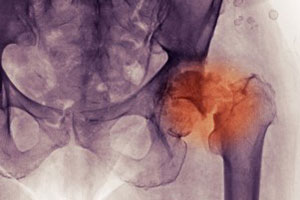![]()
Blog @ SunTech
Advice from the BP Measurement Experts
Don't Break a Hip: How ABPM Can Help

As we have all heard time and time again hypertension is a prevalent public health issue, but it affects the elderly at a much higher rate. A newly published study now warns that "caution" is needed when initiating new antihypertensive drugs to treat elderly patients. The findings, published last month in the Archives of Internal Medicine (AIM), showed that elderly patients had a 43% increased risk of having a hip fracture within the first 45 days following the start of new antihypertensive treatment.1 It is reportedly "'the first study to demonstrate an immediate increased risk of hip fracture on initiation of antihypertensive drug therapy in community-dwelling hypertensive elderly patients'". The researchers also hypothesized that the most likely cause of the hip fractures were falls related to orthostatic hypotension, which can have symptoms such as dizziness and fainting.2
The Joint National Committee on Prevention, Detection, Evaluation, and Treatment of High Blood Pressure (JNC), the American Society of Hypertension (ASH) and the National Institute for Clinical Excellence (NICE) recommend regular monitoring for patients who start antihypertensive therapy. So how can we best monitor these patients? JNC and NICE both recommend the use of in-office measurement.3,4 ASH encourages the use of Ambulatory or Home BP monitoring.5
"elderly patients had a 43% increased risk of having a hip fracture within the first 45 days following the start of new antihypertensive treatment"
Ambulatory BP monitoring (ABPM) is widely recognized as a tool for diagnosing hypertension. But it is also a useful tool for monitoring the efficacy of antihypertensive treatment, evaluating optimal BP control in patients with postural hypotension, and aiding in the assessment of patients with hypotensive symptoms that occur with antihypertensive medication.4,6
Clearly, as the AIM study has shown, monitoring could be beneficial for some patients at the onset of antihypertensive treatment and ABPM would be an ideal candidate given its proven value for this specific application. But we want to hear your thoughts. How do you monitor elderly patients starting antihypertensive drug treatments in order to monitor for orthostatic hypotension?
Sources
- Archives of Internal Medicine: The Risk of Hip Fracture After Initiating Antihypertensive Drugs in the Elderly, http://archinte.jamanetwork.com/article.aspx?articleid=1392493#METHODS
- Heart Wire: Starting BP meds ups risk of hip fracture in elderly, http://www.theheart.org/article/1477231.do?utm_medium=email&utm_source=20121121_EN_Heartwire&utm_campaign=newsletter
- NICE Quick Reference Guide: Hypertension, http://www.nice.org.uk/nicemedia/live/13561/56015/56015.pdf
- Seventh Report of the Joint National Committee on Prevention, Detection, Evaluation, and Treatment of High Blood Pressure, http://hyper.ahajournals.org/content/42/6/1206.long
- ASH Position Paper: When and how to use self (home) and ambulatory blood pressure monitoring, http://www.ashjournal.com/article/S1933-1711(08)00047-8/abstract
- New England Journal of Medicine: Ambulatory Blood-Pressure Monitoring, http://www.nejm.org/doi/full/10.1056/NEJMra060433
Interested in getting more SunTech news, product info, as well as
tips, tricks, and insights from BP experts?
Sign up to get fresh content delivered direct to your inbox.


